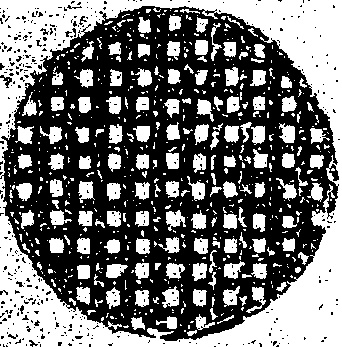Method for preparing skin tissue engineering scaffold based on 3D bio-printing technology and in-vitro cytotoxicity testing method for scaffold
A technology of skin tissue engineering and tissue engineering scaffold, which is applied in the field of 3D printing technology, can solve the problems of fast degradation speed and poor mechanical properties, and achieve the effect of easy control, good mechanical properties and improved mechanical strength
- Summary
- Abstract
- Description
- Claims
- Application Information
AI Technical Summary
Problems solved by technology
Method used
Image
Examples
Embodiment 1
[0033] (1) Preparation of gelatin (gelatin, GEL) solution: add gelatin to phosphate buffered solution (PBS), and keep stirring until the gelatin is completely dissolved;
[0034] (2) Preparation of cellulose nanofibers (cellulose nanofibers) / gelatin (gelatin, GEL) composite hydrogel: Add a certain amount of CNF solution to the GEL solution, so that the GEL concentration is 3%, and the CNF solid filling amount is 3%. %, blending and stirring for 1 hour at 30°C;
[0035] (3) 3D printing of tissue engineering scaffolds: Put the CNF / GEL composite hydrogel material prepared above into the barrel of a 3D printer, set the barrel temperature to 3°C, platform temperature to 1°C, needle diameter to 150 μm, and extrude The pressure is 0.08MPa, the travel speed of the nozzle is 10mm / S, and the aperture is 100μm to complete the 3D printing of tissue engineering scaffolds;
[0036] (4) Cross-linking of tissue engineering scaffolds: Put the printed scaffolds into the genipin solution with a...
Embodiment 2
[0038] (1) Preparation of gelatin (gelatin, GEL) solution: add gelatin to phosphate buffered solution (PBS), and keep stirring until the gelatin is completely dissolved;
[0039] (2) Preparation of cellulose nanofibers (cellulose nanofibers) / gelatin (gelatin, GEL) composite hydrogel: Add a certain amount of CNF solution to the GEL solution so that the GEL concentration is 5%, and the CNF solid filling amount is 5%. %, blending and stirring for 2 hours at 30°C;
[0040] (3) 3D printing of tissue engineering scaffolds: Put the CNF / GEL composite hydrogel material prepared above into the barrel of a 3D printer, set the barrel temperature to 5°C, platform temperature to 3°C, needle diameter to 150 μm, and extrude The pressure is 0.1MPa, the nozzle walking speed is 10mm / S, and the aperture is 150μm, and the 3D printing of tissue engineering scaffold is completed;
[0041] (4) Cross-linking of tissue engineering scaffolds: Put the printed scaffolds into the genipin solution with a c...
Embodiment 3
[0043](1) Preparation of gelatin (gelatin, GEL) solution: add gelatin to phosphate buffered solution (PBS), and keep stirring until the gelatin is completely dissolved;
[0044] (2) Preparation of cellulose nanofibers (cellulose nanofibers) / gelatin (gelatin, GEL) composite hydrogel: Add a certain amount of CNF solution to the GEL solution so that the GEL concentration is 6%, and the CNF solid filling amount is 8% %, blending and stirring for 3 hours at 35°C;
[0045] (3) 3D printing of tissue engineering scaffolds: put the CNF / GEL composite hydrogel material prepared above into the barrel of a 3D printer, set the barrel temperature to 8°C, platform temperature to 5°C, needle diameter to 220 μm, and extrude The pressure is 0.1MPa, the traveling speed of the nozzle is 15mm / S, and the aperture is 200μm to complete the 3D printing of tissue engineering scaffolds;
[0046] (4) Cross-linking of tissue engineering scaffolds: Put the printed scaffolds into the genipin solution with a...
PUM
| Property | Measurement | Unit |
|---|---|---|
| Aperture | aaaaa | aaaaa |
| Diameter | aaaaa | aaaaa |
| Height | aaaaa | aaaaa |
Abstract
Description
Claims
Application Information
 Login to View More
Login to View More - R&D
- Intellectual Property
- Life Sciences
- Materials
- Tech Scout
- Unparalleled Data Quality
- Higher Quality Content
- 60% Fewer Hallucinations
Browse by: Latest US Patents, China's latest patents, Technical Efficacy Thesaurus, Application Domain, Technology Topic, Popular Technical Reports.
© 2025 PatSnap. All rights reserved.Legal|Privacy policy|Modern Slavery Act Transparency Statement|Sitemap|About US| Contact US: help@patsnap.com



